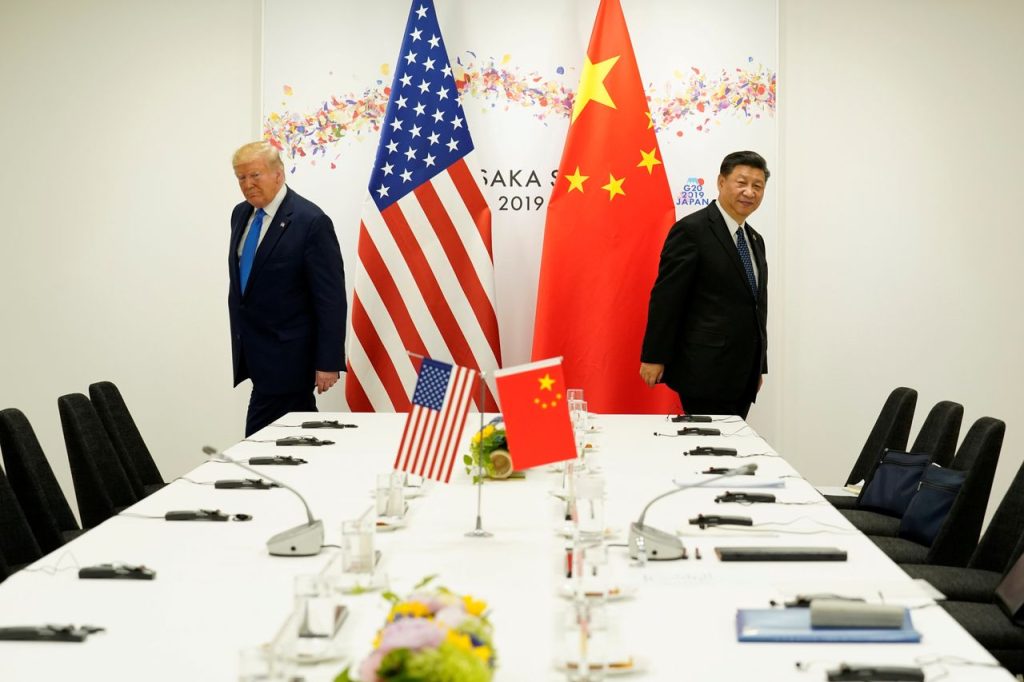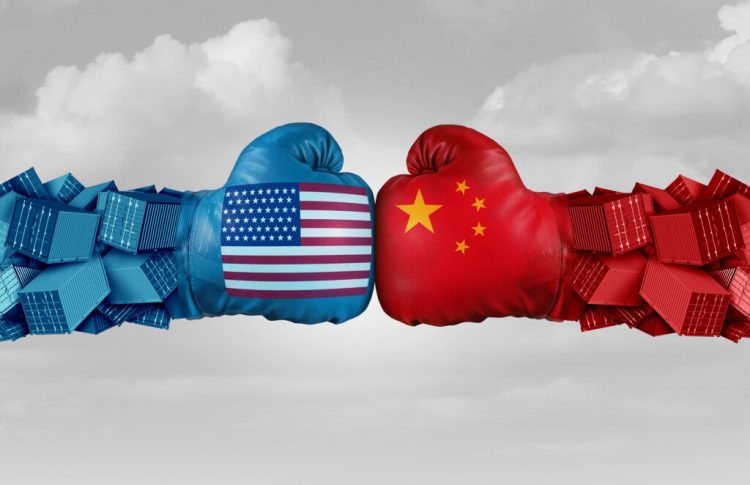The relationship between the United States and China has entered a period of heightened tension in recent years, marked by trade wars, military posturing, and ideological clashes. As two of the world’s most powerful nations, the US and China are engaged in a strategic rivalry that has significant implications for global politics, economics, and security. This tension has left many countries in the Asia-Pacific region, as well as around the world, facing a delicate balancing act, as they seek to navigate their relations with both powers without being caught in the crossfire.
In this article, we will explore how the Asia-Pacific countries can maintain a strategic balance in the midst of growing US-China rivalry. We will examine the geopolitical, economic, and security considerations that influence their policies, as well as potential strategies they can employ to safeguard their national interests and maintain stability in the region.
1. The Growing Tensions Between the US and China
The US-China relationship has undergone a significant transformation in recent years. From being strategic partners in the 1990s and early 2000s, the two countries have now entered an era of intense competition. Several key issues contribute to the current state of tension:
Economic Competition and Trade Wars
The trade war between the US and China, which began in 2018 under the administration of President Donald Trump, escalated tensions between the two nations. The US imposed tariffs on hundreds of billions of dollars worth of Chinese goods in a bid to address concerns over intellectual property theft, unfair trade practices, and the trade deficit. While there have been efforts to negotiate a resolution, many of these issues remain unresolved, and tariffs and trade barriers continue to shape the economic relationship between the two powers.
For Asia-Pacific countries, this has created significant challenges. Many economies in the region are heavily dependent on trade with China, while others have strong ties with the US. The trade war has disrupted supply chains, increased costs for businesses, and created uncertainty about future trade relations.
Military Tensions and the South China Sea
Another major point of tension is the growing military rivalry between the US and China, particularly in the Asia-Pacific region. China’s growing military presence in the South China Sea, its increasing assertiveness over territorial disputes, and its military modernization efforts have led to concerns in neighboring countries and the US. In response, the US has conducted freedom of navigation operations in the South China Sea and strengthened its military alliances with countries like Japan, South Korea, and Australia.
The US also views China’s growing influence in the Indo-Pacific region as a challenge to its dominance in the global order. The US has responded by reinforcing its alliances and partnerships in the region, while China has sought to expand its military and economic footprint through initiatives like the Belt and Road Initiative (BRI) and its increasing naval capabilities.
Ideological Rivalry
Beyond economic and military concerns, the US and China are also engaged in an ideological rivalry, as both nations promote their models of governance and values. The US advocates for democracy, human rights, and a liberal international order, while China promotes its model of authoritarian governance and a vision of regional and global order that is centered around its own leadership. This ideological divide has been most evident in issues such as Hong Kong, Taiwan, and human rights in Xinjiang, where the US and its allies have criticized China’s policies.
2. The Challenge for Asia-Pacific Countries
Asia-Pacific countries face a unique set of challenges as they navigate the US-China rivalry. The region is home to some of the world’s most dynamic economies, including China, Japan, India, and South Korea, as well as many smaller nations with rapidly growing markets. These countries are deeply integrated into global supply chains, trade networks, and financial markets, which means that the fallout from the US-China tensions has significant economic and political ramifications for the entire region.
At the same time, many countries in the Asia-Pacific region have longstanding strategic and security relationships with the US, particularly in terms of defense and security alliances. The US has military bases in Japan, South Korea, and Australia, and it has provided security guarantees to many countries in the region. However, as China’s economic and military influence grows, many of these countries are also strengthening their ties with China, driven by economic opportunities and geopolitical considerations.
As a result, Asia-Pacific nations find themselves caught in a delicate balancing act: they must navigate their relationships with both the US and China without jeopardizing their national interests, economic prosperity, or security.
3. How Asia-Pacific Countries Are Responding
Given the complexity of the situation, Asia-Pacific countries have adopted a range of strategies to manage their relations with both the US and China. These strategies reflect their unique geopolitical realities, economic dependencies, and security concerns.
1. Strengthening Regional Cooperation and Multilateralism
One of the primary strategies employed by Asia-Pacific countries is to strengthen regional cooperation and multilateralism, reducing their reliance on any single power while promoting greater stability and cooperation in the region. The region has several multilateral organizations, such as the Asia-Pacific Economic Cooperation (APEC), the Association of Southeast Asian Nations (ASEAN), and the East Asia Summit (EAS), that serve as platforms for dialogue and cooperation.
Through these organizations, countries can pursue common interests, address regional challenges, and reduce the risk of conflict. For example, ASEAN countries have sought to maintain a neutral stance on issues like the South China Sea, advocating for a rules-based approach to resolving disputes while avoiding taking sides in the US-China rivalry.
Furthermore, the Regional Comprehensive Economic Partnership (RCEP), which includes China, Japan, South Korea, and other Southeast Asian nations, is a trade agreement that aims to deepen economic integration and cooperation in the region. This multilateral trade agreement reflects the region’s desire to maintain economic stability and promote growth while avoiding the disruption caused by US-China trade tensions.
2. Diversifying Economic Partnerships
Another strategy that Asia-Pacific countries are using to navigate the US-China rivalry is diversifying their economic partnerships. Many countries in the region, particularly those in Southeast Asia, are actively seeking to reduce their dependence on China and the US by expanding trade relations with other countries and regions.
For example, countries like Vietnam, Indonesia, and Malaysia are increasingly turning to the European Union, India, and other emerging markets to diversify their trade networks. The increasing importance of the Indo-Pacific region has also led to greater cooperation with India, particularly in sectors such as trade, investment, and technology. India, as a rapidly growing economy, is seen as a key partner for many countries looking to balance their economic relationships with China.

3. Enhancing Defense and Security Cooperation
Many countries in the Asia-Pacific region are also strengthening their defense and security cooperation, both with the US and within the region, in order to counterbalance China’s growing military power. This includes deepening existing alliances, such as the US-Japan Security Alliance and the US-South Korea Defense Treaty, as well as engaging in new security frameworks.
One example of this is the Quad (Quadrilateral Security Dialogue), which is an informal strategic forum comprising the US, Japan, India, and Australia. The Quad seeks to promote a free, open, and inclusive Indo-Pacific, and it has gained increasing attention as a counterbalance to China’s rising influence in the region. The Quad countries have engaged in joint military exercises, strengthened security cooperation, and advocated for a rules-based order in the region.
Additionally, countries like Taiwan, which is a key flashpoint in US-China relations, are seeking to bolster their own defense capabilities in response to perceived Chinese threats. Taiwan has increased its military spending and sought more security assistance from the US in order to defend itself against potential aggression from China.
4. Adopting a Pragmatic Approach to Engagement with China
While many Asia-Pacific countries are strengthening their ties with the US, they are also recognizing the importance of maintaining stable and pragmatic relations with China, given its economic significance and growing regional influence. China is the largest trading partner for many countries in the region, and its Belt and Road Initiative (BRI) offers significant infrastructure investment opportunities.
Countries such as Singapore, Malaysia, and Thailand have sought to balance their relations with both powers by engaging with China economically while aligning with the US on security issues. These nations view their relationships with China through an economic lens, focusing on trade, investment, and infrastructure development, while navigating geopolitical tensions carefully.
5. Leveraging Soft Power and Diplomacy
Finally, Asia-Pacific countries are leveraging soft power and diplomacy to carve out a space for themselves in the US-China rivalry. By promoting regional integration, cultural exchange, and diplomacy, countries like South Korea, Japan, and Indonesia are working to enhance their international standing and influence, without directly aligning with either the US or China.
Diplomatic efforts are also crucial in mitigating tensions. For example, the US and China have engaged in high-level talks on trade, climate change, and regional security, and Asia-Pacific countries can serve as mediators and facilitators in these discussions.
4. Conclusion: A Complex and Evolving Landscape
The US-China rivalry is reshaping the geopolitical landscape of the Asia-Pacific region, and the challenge for many countries is to maintain a delicate balance between the two global powers. While each nation has its own set of priorities and interests, it is clear that the region must embrace multilateralism, diversify its economic partnerships, and engage in diplomacy to avoid being caught in the crossfire of this strategic competition.
As the US-China rivalry continues to evolve, Asia-Pacific countries will need to remain agile and pragmatic, adapting their strategies to the shifting dynamics of global power. By fostering regional cooperation, enhancing defense and security ties, and maintaining strong economic and diplomatic relations with both the US and China, these countries can not only safeguard their national interests but also contribute to a more stable and prosperous region in the years to come.





























